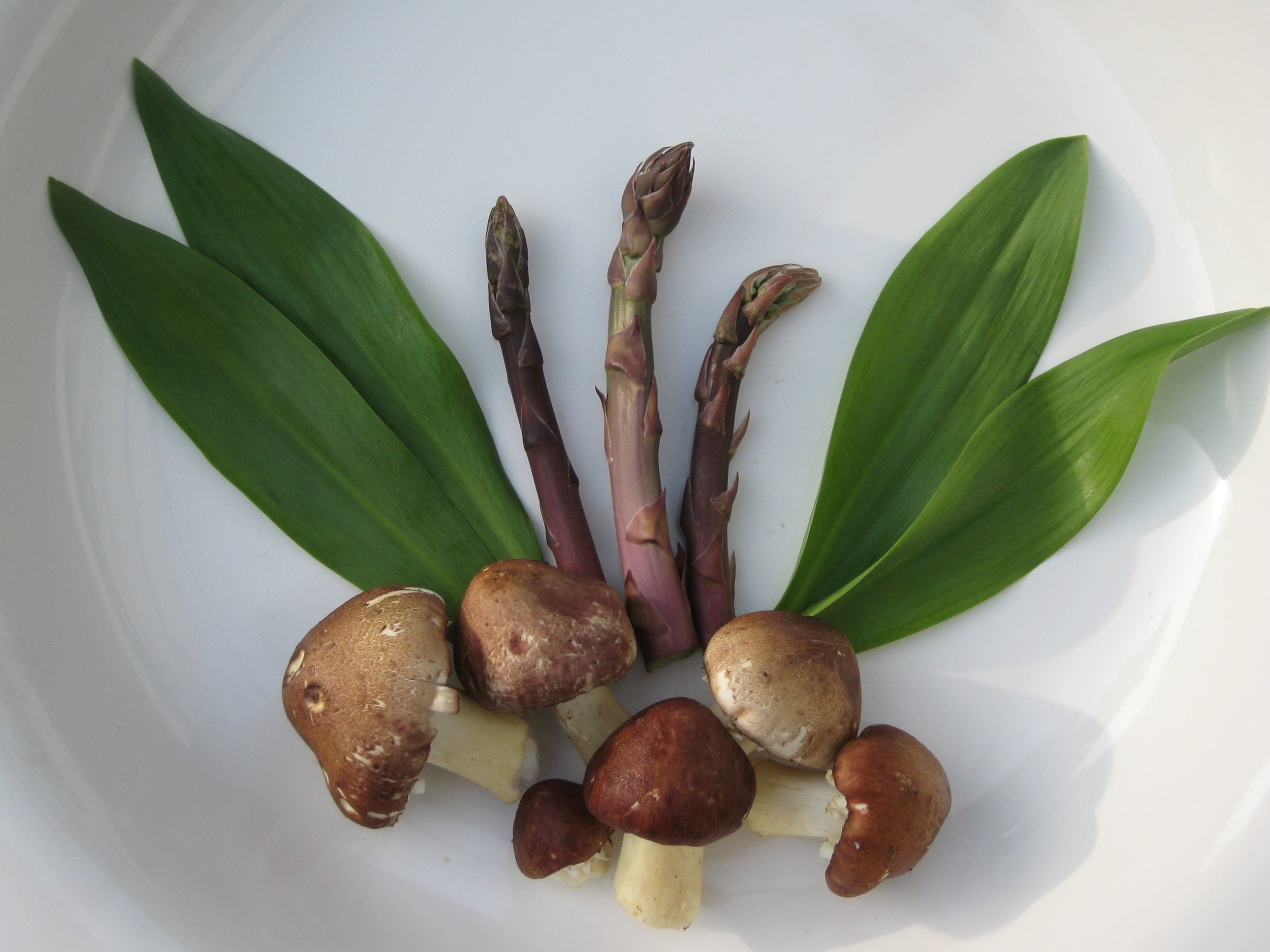Nature’s Farming,A Contemplation
Jonathan Bates
Nature: the phenomena of the physical world collectively, including plants, animals, the landscape, and other features and products of the earth, as opposed to humans or human creations.
Farm: an area of land and its buildings used for growing crops and rearing animals.
[Defined from Oxford]
Many of you reading this, might have forgotten, tucked away in your dusty history books, that the majority of Homo sapiens sapiens’ (human beings) evolution was spent indistinguishable from the teeming landscapes around them.
When does ‘history’ say this fact changes, and humans are no longer a…”feature and product of the earth…”?** Was it when the first stone hammer was used, or fire collected for the first BBQ, how about when wolves were domesticated, or the first seed sprouted due to human hands?
Northern Bur Oak
According to the definition listed above, “Nature” IS “... opposed to human or human creations.” This makes sense to some extent. Standing in Central Park in downtown Manhattan, NY on a hot summer day I can experience the differences in sights, sounds, smells, and comfort from under the shade of a tree vs standing on concrete 100 feet away. One could argue that the tree and its shade are natural and the concrete effect is “man made”. Fits the definition nicely!
On the other hand, if that tree I am standing under has fruit hanging from it, and I pick the fruit/Nature and eat it, the fruit “becomes me”... I am human, apart from nature, yet I am eating and incorporating the fruit within my body. There is no “opposition” now, is there? We could take this in many directions… Did someone plant that fruit tree? I doubt Central Park was built around it. In fact, which landscapes aren’t touched by human hands? Is Yellowstone National Park nature? How about my neighbors backyard? The grass in the cracks of the sidewalk? The weeds in the farmers ditch? Whoever came up with the definition of Nature must have been confused because when we really LOOK, it’s hard to find where humanity ends and Nature begins!
Bee with Chives
Speaking of farms… According to that Oxford definition above, farms include plants and animals, BUT these are “human creations”, “opposed” to Nature, right? But like the Central Park fruit, where do I and the animal or plant I’m farming really separate from each other? Sure, one could argue that we are two separate things, until being consumed. But doesn’t a farmer steward the land so that they can give clean water to that animal or plant… Their mind and hands facilitate that relationship, is there really ever a nature “opposition” even on farms?
Yet, these stories set the stage for what I really want to share, that humans and nature haven’t ever really been “opposed”, and as a farmer and land steward, I would like us to contemplate our relationship to the landscapes around us, past, present and future. Right now what might you be experiencing in your landscape and place? How are natural and human relationships interconnected around you?
As I walk the 10 magnificent acres of Upstate New York that my family stewards at Longspoon Farm, I’m observing as a farmer, as a naturalist, ecologist, designer, father, spouse, and community member. One of the tools I use to consider if my relationship to the landscape is a healthy one, is to make a note of the animals and plants I come across. Here are some of my favorites (most come with fanciful stories, alas, for another article):
American Kestrel house
Wood Turtle travels
Monarch Butterfly relations
Swarm of Bees
Spongy Moth blanket
Bald Eagle digesting
Deer family
Milkweed games
Jumping Worm parade
Blue Bird winter
American Goldfinchpalooza
Red Fox n goose
Coyote treasure
Knapweed feast
Locust Borer design
Dragonfly summer
Leopard Frogs abound
Milk Snake acrobatics
Turtlehead Flower surprise
Northern Harrier Hawk hovers
Milk Snake acrobatics
The reason these animal and plant relationships are important is because I know, through a lifetime of observation, in many landscapes, nature seems to thrive when diversity is high. And not just diversity of the living, but diversity of places too. It seems life thrives when there are places to hide, nest, feed, connect, sing, roam, swim, fly, drink, congregate, warm, and pass on.
In our landscape and farm we encourage diversity of places by creating spaces. The tree crop allies become pastures for livestock and vegetable and fruit production, the woodlands and wet areas become wild, the gardens feed people, the wildflower meadows invite insects, birds and beauty, the orchards and plant nursery sustain home economy, farm buildings and junk piles are habitats, all of which contributes to an interrelationship between human and nature that is unbroken.
We are Nature Farming.***
**Please also be aware that there are people and cultures around the earth today that know they ARE nature, who are thriving, and also dying due to seen (war) and unseen (microplastics) threats from Western(izing) societies.
***Inspired by Penny Livingston-Stark who said, “We are Nature Working”.



